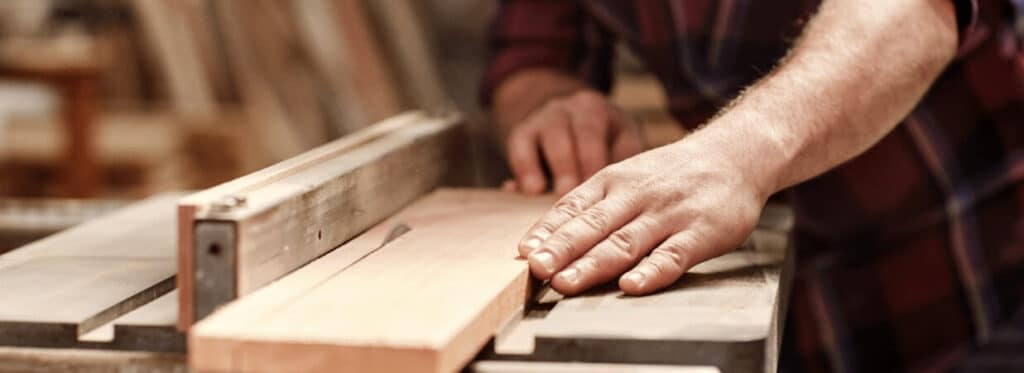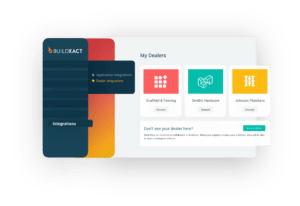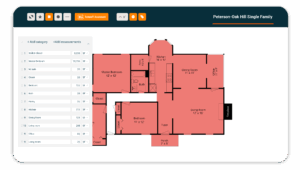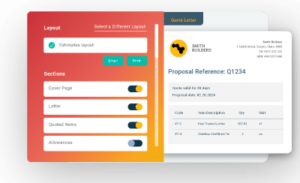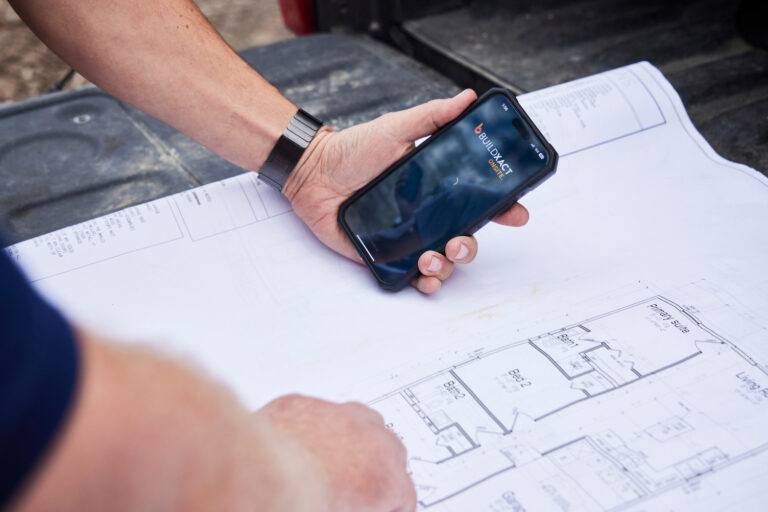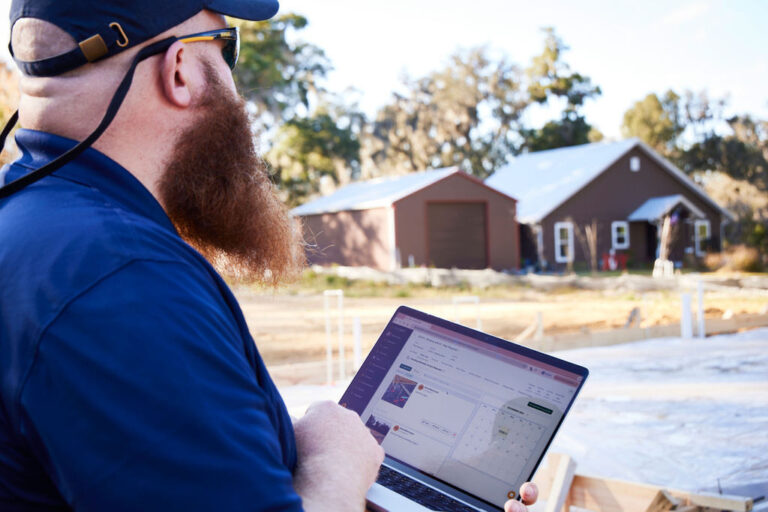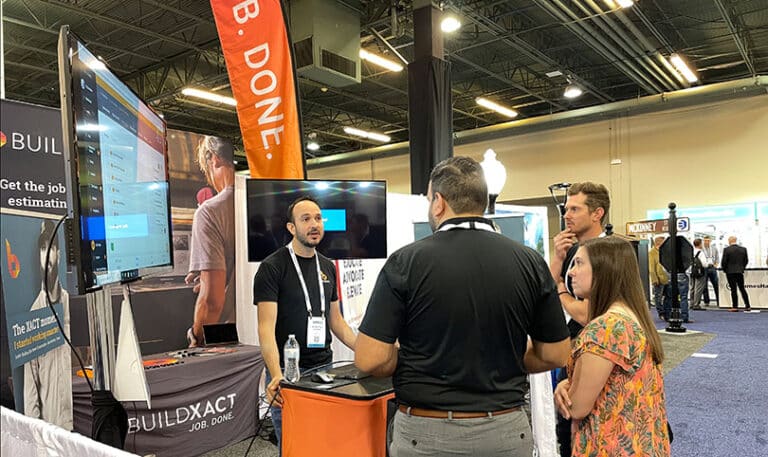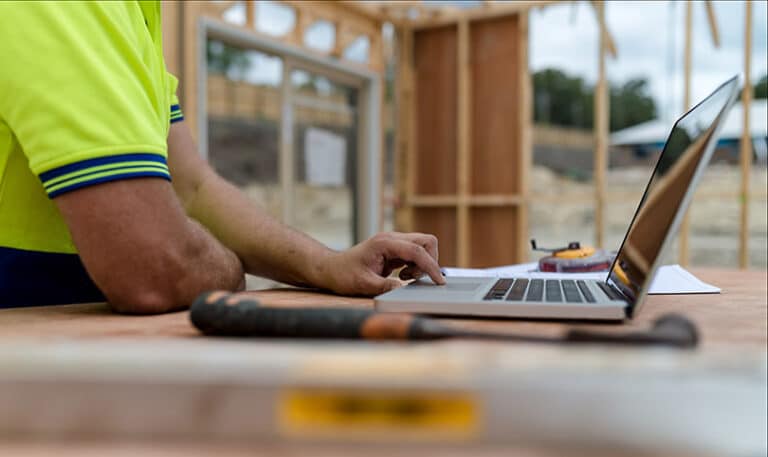Construction takeoffs sometimes referred to as material takeoffs, are an essential piece for almost any construction project. No matter the size of the job, takeoffs play a critically vital role in providing an accurate estimate for the builder or trader and their customer. It is even helpful for those in the electrical field since it will help them determine the quantities required for specific projects. All you need is to get the blueprints ahead of time to get accurate measurements. It is most cost-effective to get all the data ahead of time so that you can get the right quantities for your projects.
What is a takeoff in construction?
What exactly is a takeoff in construction? “The estimation of quantities for a contract from plans and drawings, which are then recorded in the bill of quantities,” according to Dictionary of Construction Terms. Takeoff preparation — plan details, proper measurement, and the number of materials connected to a list of prices — leads to an accurate takeoff and an accurate estimate. And in more important terms, a smoothly run job from start to finish.
In some cases, experienced builders will likely know the estimated cost and materials required to complete a job. While material quantities needed for the project are a vital part of the takeoff process, other elements include:
- material costs
- labor
- administrative overhead (procurement and site supervision)
- additional expenses for a complete and accurate estimate.
The more complex a job is, the greater the benefit of using a precise takeoff tool to arrive at accurate estimates, minimizing the risk of losing money and time.
Is it a construction takeoff or an estimate?
Are you clear on what each one is? A construction takeoff is when the custom home builder works to determine the quantity of each material, taking into account the price they will need to complete a job. Simple, right? Remember, digital takeoffs are not associated with material costs. Another factor to note is that construction takeoffs do not include extra costs. Those belong in the estimate, no matter the project or projects you are working on.
On the other hand, an estimate elevates the construction takeoff to the next level. Estimates take the costs and apply them to all the materials determined by the digital takeoff cloud software. Then, it adds in a number of other construction costs the contractor will face down the road. These additional costs might include, but are not limited to, things like travel costs, taxes, applying waste factors, labor costs and any other extra costs you will likely face as a builder.
Do you know how to do a construction takeoff?
We have already mentioned what takeoffs are, what does it take to pull one off? First off, you want to do an effective takeoff to submit a bid for a project, create an estimate for a job, or determine how much material you will need to buy for a specific job. Creating a materials list is essential. Knowing what materials you will need for a job will help you prepare a more accurate estimate. Always keep in mind the prices of the materials so that you can remain within your budget. It might be worth it to check with the contractors and subcontractors working on the construction project. Checking online for pricing information can go a long way in saving money. Most websites include prices, so it might be worth it to spend some time doing some research. Due diligence will help keep your construction cost at a reasonable level. You do not want to jump right into the takeoff without doing some prior research. Estimating can be tricky, but software tools help avoid costly mistakes.
You have two options for doing a construction takeoff: manual takeoffs or digital takeoffs. Both get the job done, but manual takeoffs can be more time-consuming and open the door to inaccuracies, which could end up costing the custom home builder valuable time and money. In the next section, we will go into more detail and discuss manual takeoffs and digital takeoffs to arm you with the necessary data to make the right decision. One thing to note is that you will need to be able to access the internet for digital takeoffs.
Manual or digital takeoffs
Many custom home builders and trades create a construction takeoff the old-school way, or what is referred to as a manual takeoff, with a pen or pencil and paper and some rules of thumb for pricing. Depending on preference, a builder or tradie may use colored pencils, pens and highlighters to distinguish vital elements in the drawings. Color coding is a popular method professionals in the construction industry use to stay organized. The good thing about color coding is that it can be implemented in manual takeoffs and digital takeoffs.
The use of Microsoft Excel for creating material pricing using built-in formulas is very common in a digital takeoff and can make a painful process relatively painless and easy. While Microsoft Excel is helpful, it does not compare to the features estimating software tools make available. It is truly a must for anyone in the construction industry. Once you have access to all the data you need, including the price of certain materials, the rest is easy if you can get access to them.
You will likely want to get some information ahead of time, like the price of certain materials and things of that nature. The features it provides, especially the ability to input formulas, will save you time and ensure accuracy. The time and skill involved to create manual blueprints take years to develop, often learned from painful, and at times, costly mistakes. Proceed with caution and always double-check your work if you opt for doing a manual takeoff.
However, translating the data into an accurate quote or estimate for the customer takes an extraordinary amount of time and effort. If you choose to do this manually, you will have to pay extra attention to the details to ensure accuracy and efficiency.
While many builders and trades continue to rely on a manual method to a construction takeoff, as complex and time-consuming as possible, it can result in errors and inaccurate measuring and calculations due to changes. Thanks to advances in technology, there are options to create a digital takeoff, and the benefits of doing so are exponentially great.
If you are reading this, you are likely searching for a more accessible and beneficial way to create a takeoff. There are innumerable quantities of cloud-based software options on the market, and if you are a custom home builder or trade, you may be asking yourself if it is worth the investment. If you are looking to save time and win more work, it is definitely worth it. Here is our guide to using construction takeoff software.
The benefits of using takeoff software
1. Efficiency
Using cloud-based estimating software to create construction takeoff can save you a significant amount of time (in most cases, custom home builders can measure the time saved in hours) and effort. Cloud-based estimating software also generates a more reliable output, which you can be confident in the end. The takeoff process you choose is entirely up to each person’s preference. Most of the elements used in a construction takeoff are repeatable (floor area, roof area, framed wall area, etc.), so using a digital system with stored data allows for a more consistent, straightforward and streamlined process.
Cloud-based construction takeoff software allows you to speed up the process while not compromising accuracy. Top-notch accuracy can make a big difference for a custom home builder’s bottom line since they will have the capacity to take on more work because they have more time. The faster you finish a construction project, the more you can take on.
2. Accuracy
A digital construction takeoff allows for easy organization of data, which will make it easier for the custom home builder to go back and quickly find any bit of data they might need at a given time. Measuring and pricing is a one-step task, and it is automatically linked, enabling precise quantities and accurate estimates. Best of all, because factors are bound to change, edits are easy to manage with a few clicks, making it a painless process when the need for changes arises. But how do you decide how much material to buy? Nailing the quantities will help you save money in the long run.
Buildxact helps you create accurate measurements and then converts them into a list of materials required for the project or projects you will be working on at any given time. You will not need to stress about spending too much money on materials you will not use or worry about not buying enough and then potentially cause delays to the construction project. On the other hand, purchasing a large quantity of materials can be costly, especially when it cuts into your profits. Accuracy is essential when it comes to estimates. They can be the difference between a successful, profitable job and a costly one that might lead to some adjustments down the line to make up for it.
3. Integration and collaboration
Many software systems automate the request for quote (RFQ) process, so custom home builders do not spend valuable time, energy and focus on chasing your suppliers for quotes. Most software platforms also allow you to see who has looked at your RFQ email to manage it better. Accounting integration provides the ability for custom home builders to keep on top of their accounting from quote to invoice in one place. One of the most common software programs small home builders and contractors use is Microsoft Excel.
If the software you are using can integrate with popular programs like Microsoft Excel, you are ahead of the curve. Integration makes a custom home builder’s life easier and less hectic because it allows them to easily pull or send data from other programs into theirs with ease. When dealing with concrete monetary figures and a large quantity of data, you want to make sure your data is accurate, organized and easy to find. The numbers must be correct, and software integration and organization will be a custom home builder’s best friend, so finding a software solution, like Buildxact, can help you stay on track for steady business and growth.
4. Competitive advantage
It is a dog-eat-dog world out there, and it is vital to get ahead of your competitors with faster and more accurate quotes and construction takeoffs. Buildxact helps builders gain confidence their estimates are accurate, and they are not losing money. Knowing your business is not bleeding money, in turn, will provide you with more time to focus on what matters most: building and growing your customer base. But, winning more business will not mean more headaches and busy work for builders.
The all-in-one platform will provide the necessary tools to arm you with what would be the equivalent of a mighty team supporting you. Builders focus on what they do best, build, and have confidence the software will assist with administrative tasks and ensure they are indeed making a profit.
These tools allow builders to work smarter, not harder and have more time for themselves. When builders have more time to spend however they wish, they will become happier and more productive instead of worrying about their business and bottom line, they will become happier and more productive.
The Buildxact digital construction takeoff advantage
There are several takeoff software platforms available in the market. Buildxact, however, is uniquely designed for the small custom home builder and other trades. We have built our platform to enable users to be up and running in a matter of hours. And, our construction takeoff tool is easy to set up and run in a matter of minutes. Just upload your drawings into one of our pre-made templates, and in 10 minutes, you are 85% done with an estimate. You are empowered to use that remaining time then to focus on what are priorities for your business. All you need is internet access and you are good to go!
Buildxact: The perfect construction takeoff software solution for custom home builders
We offer the easiest construction takeoff tool to use, which allows you to speed up the estimating process since it includes estimating software. Rest assured, however, that quick construction takeoffs do not come at the expense of accuracy. Our platform combines accuracy and speed to set you up for success. Simply upload your plans, name your pages, conduct any initial clean-up of floor plans and click the scale button. An easy calibration process allows you to make sure all drawings are to scale.
The amount of time you will save by not doing it by hand will be apparent to you very quickly. The saying “time is money” could not be more relevant than with custom home builders. In many cases, they have small teams comprised of people who have to wear many hats. At times, customers might ask custom home builders people might be asked to perform tasks that do not fall under their realm of expertise, but that is where Buildxact can fill in the gaps.
It is impossible to be an expert at everything. If accounting is not a person’s forte, a construction takeoff software solution, like Buildxact, can help provide a boost. Accounting is an area that is crucial for custom home builders. They need to know if they are making money on a construction project and whether or not taking on more work will be beneficial or detrimental to their business’s bottom line.
Buildxact makes it easy for custom home builders to know their numbers very well. Measurements can be tricky, but the construction takeoff software’s tool drastically speeds up the process, allowing the custom home builder to quickly figure out the four key types of measurements required for takeoffs: count, length, area, and volume.
Count
This type of measurement is pretty self-explanatory. Every construction project requires small home builders to know the quantity needed of items light fixtures – if they are doing electrical work – studs, nails, lumber. Counting the required materials is an important part of the estimating process and plays a big role in knowing the final construction cost. Digital takeoff software can be very helpful and is a good investment since every construction project will require an estimating process. You do not want surprises later with your material costs, especially since material costs, especially those of raw materials can be very volatile.
What our takeoff software can do
Recipes or assemblies are our proprietary way of assembling groups of materials and labor. These enable you to offer accurate estimates to your customers and send a list of materials (including the quantities) to your suppliers, such as door openings, strike plates, transoms, among others. The important factor is arriving at accurate quantities of the materials you will need. You can group materials for a complete door opening assembly, including door, lockset, number of hinges and the labor to install it. Buildxact has populated common everyday materials (framing, concrete with rebar, and drywall) into recipes, and you can also add or build your own. It makes ordering materials easier as it figures out your quantities for you.
Once you have calibrated your plans and made corrections, added in recipes and sent RFQs to your suppliers you can then proceed to create an estimate or quote for your customer. It is that simple.
To learn more about how our software can help you be more efficient and accurate in your business, try our 14-day FREE trial.
Do not just take our word for it. Builders love us!
It would be one thing if the company website said it is a great product, but it is an entirely different validation to see excellent reviews on a third-party website. Overall, the product has a 4.6 rating out of 5 from over 60 reviews. In the end, the only opinion that matters is yours, so go ahead and book a trial or demo and explore all the features it has to offer. There are different plans so find the cost that best fits your budget. Buildxact is perfect for contractors, sub-contractors, custom home builders and everyone in between. All the features and ease of use will lead to time savings you cannot imagine. Best of all, the estimating features make this one of the best, if not the best takeoff construction software in the market.




